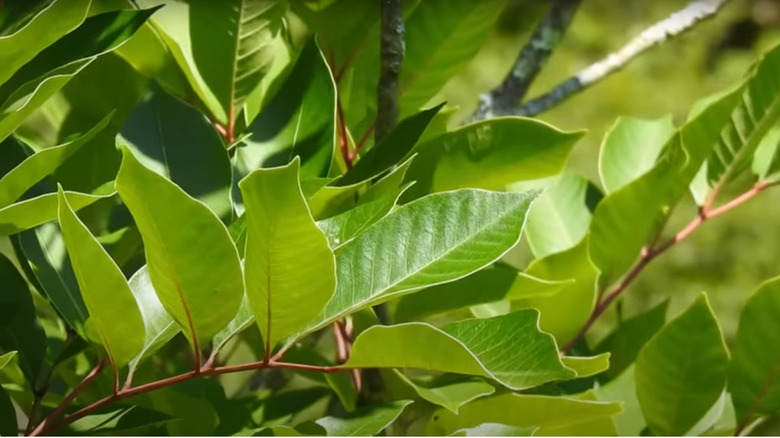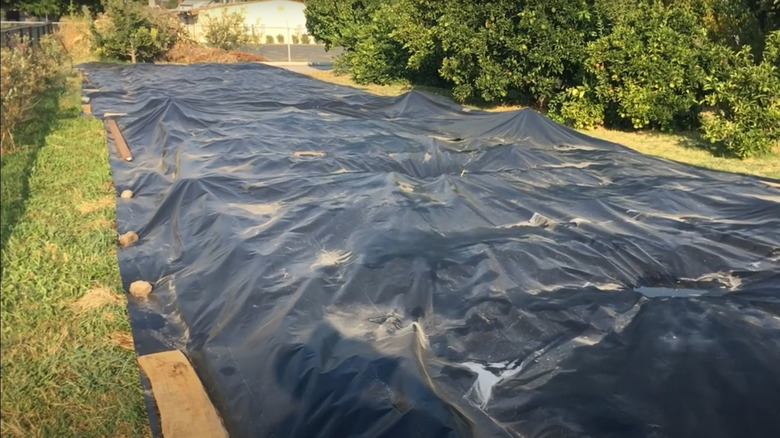Does Smothering Poison Sumac Effectively Kill The Weed?
Poison sumac (Toxicodendron vernix) is a highly toxic plant species native to eastern North America. It's related to poison ivy and poison oak and notorious for causing severe allergic reactions in individuals who come into contact with it. It's particularly dangerous because its sap contains urushiol, a toxic oil that can cause painful rashes, blisters, and swelling. So, if you find it in your garden, getting rid of poison sumac quickly should be your priority. However, this is easier said than done because eliminating poison sumac can be particularly challenging due to its resilience and toxicity. Common methods of poison sumac removal include digging or hand-pulling, using herbicides, and smothering. Manual methods can be tedious and tiring while using chemical herbicides can hurt desirable plants in case of drift (they're not eco-friendly either), so you may want to try smothering instead. But, will smothering poison sumac be enough to kill it? Yes. However, you need to do it right and be patient as the process can take several months.
Identifying poison sumac can be challenging as it resembles other non-toxic sumac species, but it can be distinguished by its clusters of white berries, red to reddish-brown stems, and compound leaves (five to 13 leaves per stem) with smooth edges. Poison sumac typically grows in wet, swampy areas, as the plant thrives in moist soil conditions. However, it can also spread to other areas through bird droppings and fecal matter from other types of wildlife that eat the berries containing seeds.
How to effectively smother poison sumac
Smothering poison sumac can be an effective method of getting rid of the weeds in your garden, but it needs to be done properly. First, locate the areas where poison sumac is growing and mark them for treatment. Trim back any existing foliage or branches to make it easier to cover the plant with a smothering barrier. Then place a heavy-duty tarp or black plastic, or an old carpet, ensuring that the poison sumac is completely covered and deprived of sunlight. Secure the edges of the barrier with weights or stakes to prevent them from being lifted by the wind or animals. Smothering takes place as the weed is deprived of nutrients and sunlight, while heat is trapped underneath, causing the poison sumac to wither and eventually die.
Regularly check the covered area for signs of regrowth or new sprouts. Keep them covered until the weed is completely eliminated. Be warned! This process can take a couple of months as poison sumac is a resilient weed known for its extensive root system. Before applying this method, make sure you're well-protected to avoid coming into contact with the weed's toxic sap. Wear protective clothing (preferably a long-sleeved shirt and a pair of pants), boots or closed-toe shoes, gloves, and eyewear. Shower thoroughly and clean all PPE and tools after handling the plant or barrier materials.
Proper disposal and prevention
Once all the poison sumac in your garden is dead, dispose of it properly. Don't think of burning the weed as this can release toxic urushiol particles into the air. Before handling dead poison sumac plants, wear protective gear as usual. Use a shovel to dig up the plant's entire root system. Place the dead weeds directly into heavy-duty plastic bags. Once these are filled, seal them securely. Double-bagging may be advisable for added protection. Dispose of the sealed bags according to local regulations and guidelines. In many cases, this may involve placing the bags in the regular household waste for pickup by municipal waste management services. Alternatively, you may need to take the bags to a designated disposal facility or hazardous waste collection site. Be sure to also clean any tools or equipment (including PPE) used during the disposal process to remove any traces of urushiol oil.
To prevent future poison sumac invasions, regularly remove weeds and debris from your garden to eliminate potential hiding places for poison sumac seeds. Since poison sumac thrives in wet, swampy areas, improve drainage in your yard to create less hospitable conditions. Educate yourself in how to identify poison sumac accurately, so if you happen to find it growing in your yard, you can nip the problem in the bud right away. Of course, if all your DIY attempts fail, don't hesitate to call in professional weed control services.


